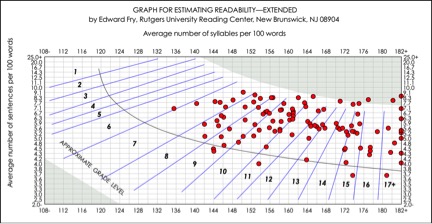K. D. Weiss1, C. R. Vargas1,2, O. Ho2, D. J. Chuang2, B. T. Lee1,2 1Beth Israel Deaconess Medical Center,Department Of Surgery,Boston, MA, USA 2Beth Israel Deaconess Medical Center,Division Of Plastic And Reconstructive Surgery,Boston, MA, USA
Introduction:
The Internet is a medium commonly utilized by patients seeking resources for health information; for many patients it has become the first source of health care information. Studies have shown that understanding supplemental educational material contributes to increased patient involvement and satisfaction. Limited functional health literacy is a potential barrier for access to these materials. Over 30% of the US population has basic to below basic literary skills which can contribute to overall health disparities, negatively impacts outcomes, and is even associated with increased mortality. As such, the National Institutes of Health and American Medical Association have recommended that patient-directed health resources should be written at a sixth-grade reading level. This study evaluates the readability of the most commonly accessed Internet resources on the subject of lung cancer.
Methods:
A search for ‘lung cancer’ was performed using Google and Bing, and the top 10 websites were identified. Location services were disabled and sponsored sites excluded. Relevant articles (n = 109) with patient-directed content available directly from the main sites were downloaded, and their readability was assessed using 10 established methods (Coleman-Liau, Flesch-Kincaid, Flesch Reading Ease, FORCAST, Fry Graph, Gunning Fog, New Dale-Chall, New Fog Count, Raygor Estimate, and SMOG). Readability scores were also grouped by parent website and by topic for comparison.
Results:
The average reading grade level across all sites was 11.2, with a range from 8.8 (New Fog Count) to 12.2 (SMOG). The readability of the material varied when compared by individual website, with a range from 9.2 to 15.2 (Cancer.gov 9.2, Mayoclinic.org 9.4, Cancer.org 9.6, Lung.org 10.1, Cancer.net 10.8, WebMD.com 11, Medicalnewstoday.com 12.2, Lungcancer.org 12.2, Medicinenet.com 13, Wikipedia.org 15.2). Only 10 articles (9%) were written at a 6th grade level or lower by any test and most of these were on the topics of prevention, risk factors, complications, and making treatment decisions.
Conclusion:
The most commonly web accessed patient-directed information about lung cancer consistently exceeds the recommended sixth grade reading level. Readability varies significantly between individual websites allowing physicians to identify and recommend sites according to a patient’s level of health literacy. Minor modifications to existing materials can significantly improve readability of materials while maintaining content for patients with low health literacy.
